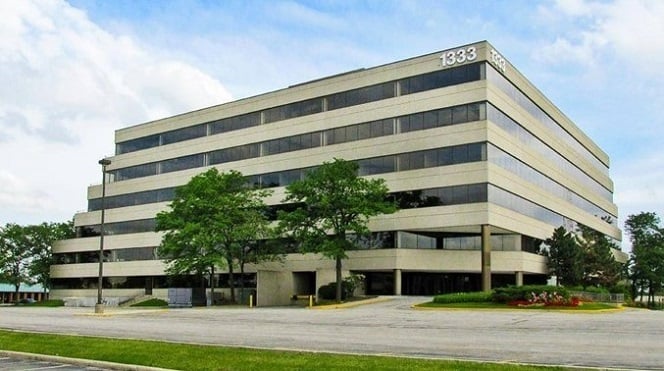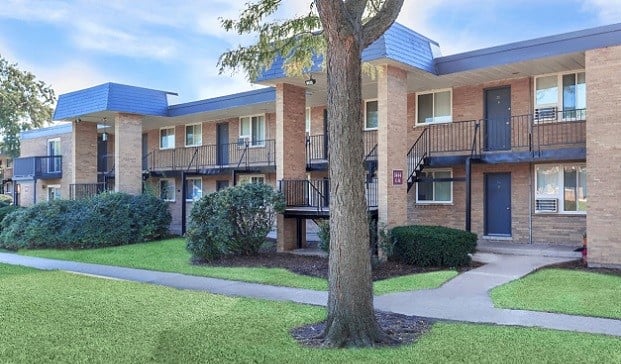When conducting medical facility master planning there is so much to do, so much to consider, and so much to plan! I always advise that the best approach is to view the building system as a whole in order to establish a comprehensive strategy for accommodating the present and future needs of the whole facility.
A facility master plan (FMP) is an integrated, flexible framework that ensures that any improvements are executed as effectively, cost-and time-efficiently as possible, and that they are in compliance with all relevant industry/building codes and standards. Not having a FMP, or an incomplete one, can lead to time consuming revisions or costly change orders (read more about Facility Master Planning here).
For healthcare facilities, which are typically very high-cost and energy-intense real estate investments, a planned approach to upgrading aging equipment or mapping out cost-saving energy efficiency improvements is particularly critical. An effective medical facility master plan should take into account statistics such as the hospital's services, census, plans for strategic growth and communities from which to draw the targeted patients in order to form a solid business model for the execution of any improvements. This requires the careful collection, analysis, and interpretation of existing healthcare facility data. These numbers must then be translated into optimized building square footage with functional adjacencies and employee work flow and patient care efficiencies front of mind.
What Matters in a Facility Master Plan
Here are 6 critical things that should be considered as part of an effective Medical Facility Master Plan:
- Parking. If a facility doesn't have onsite parking, be ready to pony up about $20,000 for one stall in a parking garage. Zoning requirements for Medical Facilities often mandate one stall for every 5 people.
- Subsurface Environmental Conditions. Let's face it, many urban hospitals are set on centuries old plots of land and have expanded to neighboring properties as they have grown. These plots could have originally contained dry cleaners, gas stations, and/or underground storage tanks. Since there is always a potential for contamination, it is extra important to do thorough due diligence (and possible remediation - which you can read more about here ) of the site to ensure that your facility is built on clean and environmentally safe land.
- ICRA During Demolition/New Construction At Existing Hospital Campuses. Protecting the health and safety of existing patients in operating parts of the facility should never be overlooked. Things like: pressurizing existing critical care suites; checking air handling to eliminate air filtration bypass; sealing windows; controlling pedestrian and contractor traffic all play into a proper Infection Control Risk Assessment (ICRA) plan. The ICRA is a critical risk management endeavor that makes the investment of professional Facility Master Planning experts and a solid implementation plan worth your while.
- Managing Intense Electricity Demands. The term medical office does not really encompass the true function of the popular walk-in multi-service healthcare facility. Standard building estimates for electrical power is far surpassed by that required for medical facilities. Surgery, diagnostics, imaging equipment, oncology care and wellness centers all require intensified power distribution networks. By determining your energy requirements early, building owners/operators can save on electrical systems design, which can cost hundreds of thousands of dollars.
- Utilizing Tax Incentives. Many states have a variety of tax incentives available to encourage companies to invest in communities and create jobs - healthcare facilities do just that. Not only can healthcare facilities hope to gain incentives from the creation of a significant number of jobs but if the facility is in an urban or depressed area, further incentives can be obtained. Many of these economic programs have incorporated energy efficiency and LEED requirements. Through LEED and sustainable building consulting, owners can stand to save valuable time and money in the planning process.
- Using BIM. Building information modeling (BIM) is a 3D design and modeling software system that is particularly well suited for medical facility construction. This software allows for major building components (electrical, IT, and communications design, HVAC and mechanical system design, plumbing system design, fire protection systems design) and systems to be seen in three planes. The contractors can translate the design model into 3-d estimating and fabrication software to nimbly produce construction costs, fabrication details, and schedules for the building work. Sub-contractor coordinated drawings can be produced with the appropriate software and eliminate many of the unplanned or unforeseen above ceiling system conflicts. Furthermore, if understood, communicated and planned by the building developer at the project outset, on-going facility management uses can be incorporated into a version of the model to make maintenance and operation of the building systems stream lined over the life of ownership of the building.
The Value Of A Detailed Facility Master Plan
Planning is the name of the game when designing and building your healthcare facility. With so many things to be considered, enlisting the expertise of a professional healthcare planner can get a handle on statistics such as the hospital's services, census, plans for strategic growth and communities from which to draw the targeted patients which is of utmost importance to form a solid business model for this high cost real estate investment. These professionals can collect, analyze, and interpret existing healthcare facility data and translate these numbers into optimized building square footage with functional adjacencies and employee work flow and patient care efficiencies in front of mind.
Being prepared up front can save you a significant amount of time and money and will result in a facility that will benefit the building owners and operators, patients and staff, and the community as a whole for years to come.
Want to continue reading?
Become a Free ALM Digital Reader.
Once you are an ALM Digital Member, you’ll receive:
- Breaking commercial real estate news and analysis, on-site and via our newsletters and custom alerts
- Educational webcasts, white papers, and ebooks from industry thought leaders
- Critical coverage of the property casualty insurance and financial advisory markets on our other ALM sites, PropertyCasualty360 and ThinkAdvisor
Already have an account? Sign In Now
*May exclude premium content© 2025 ALM Global, LLC, All Rights Reserved. Request academic re-use from www.copyright.com. All other uses, submit a request to [email protected]. For more information visit Asset & Logo Licensing.








